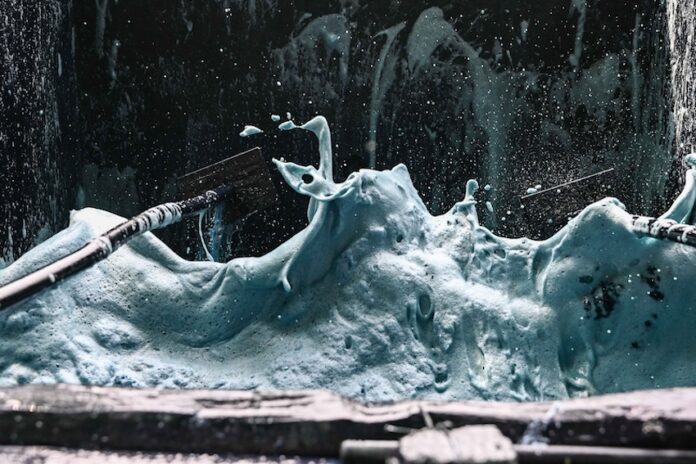Indigo is a rich blue color. We are all familiar with it, as the blue of our denim jeans. The dye that creates this iconic color is derived from a tall leafy bush called jicalete, which grows on the coast of Oaxaca in the small village of Santiago Niltepec (meaning “Hill of Indigo”). The Spanish word for indigo is anil, which is likely the origin of the community’s name.
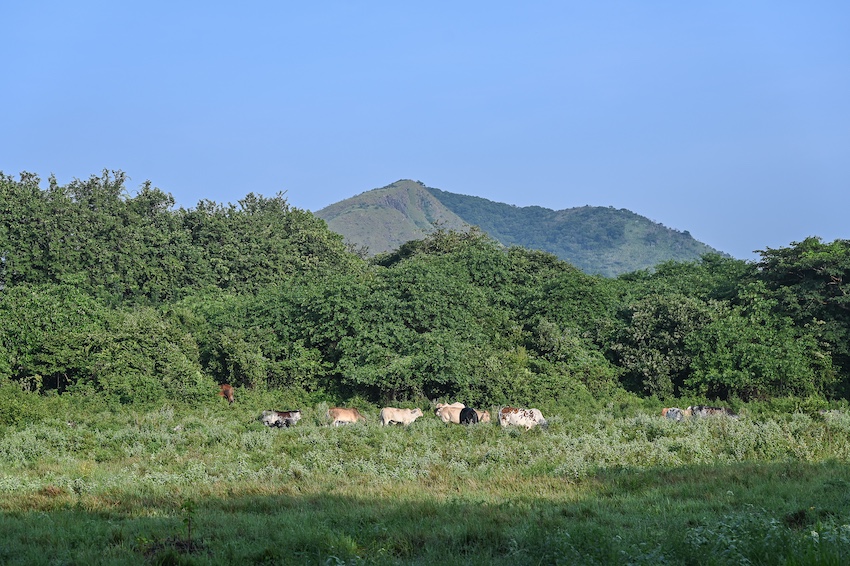
Indigo has been produced in Oaxaca since pre-Columbian times and has global historical significance, having been used in Africa, Egypt, India and Japan. It was typically used for ritual dress or royalty, as the color symbolizes wisdom, with a connection to a higher consciousness. As a pigment, it has been ascribed protective properties and even healing powers.
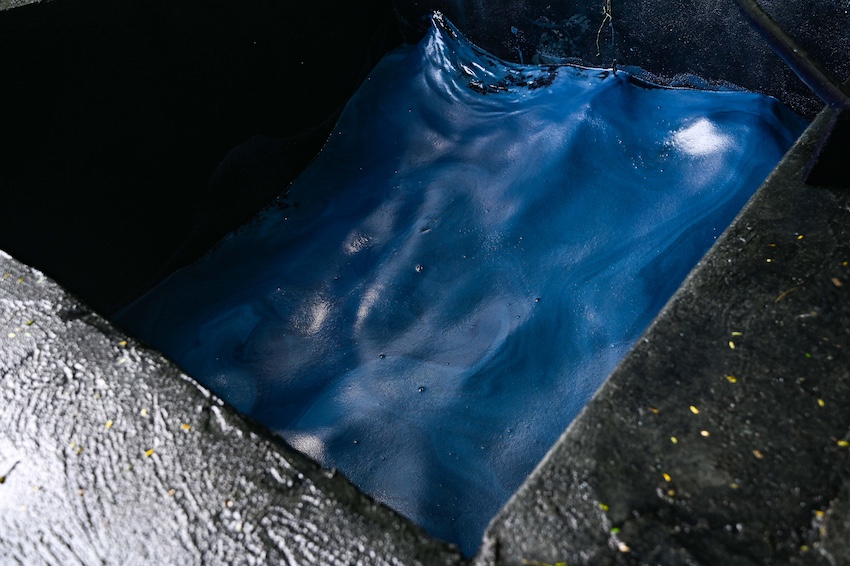
Commercial production in Niltepec began in the 18th century. With a growing interest in natural and sustainable dying practices over the past decade, production has seen a revival. This has been supported by local intervention (such as the Textile Museum of Oaxaca) and increasing demand for artisanal textiles worldwide.
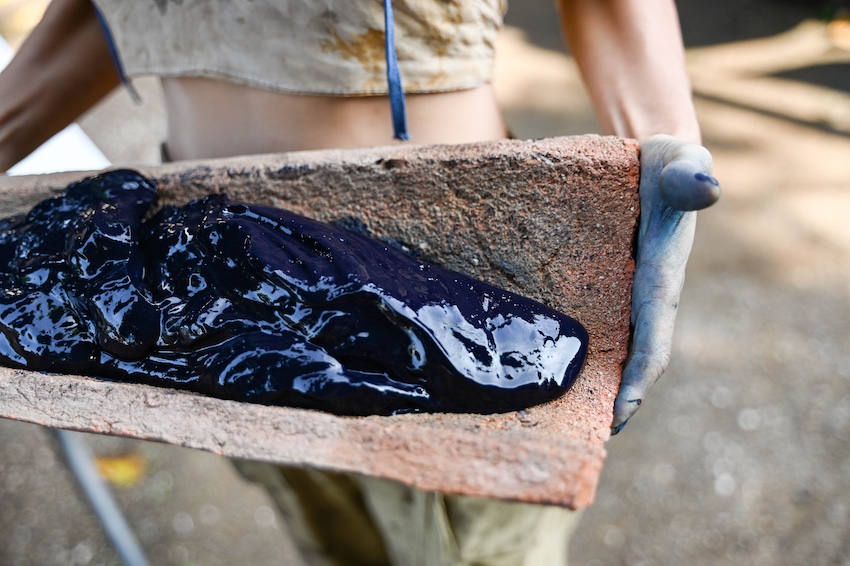
The revival of production is officially celebrated during the annual Feria de Anil. This year the festival took place on Sep. 27th and 28th, with tour of production facilties, presentations about the history and significance of indigo and workshops hosted by local and visiting artists. The festival fosters a renewed sense of pride and opens up opportunities for knowledge exchange within the community. This year, I was lucky enough to attend.
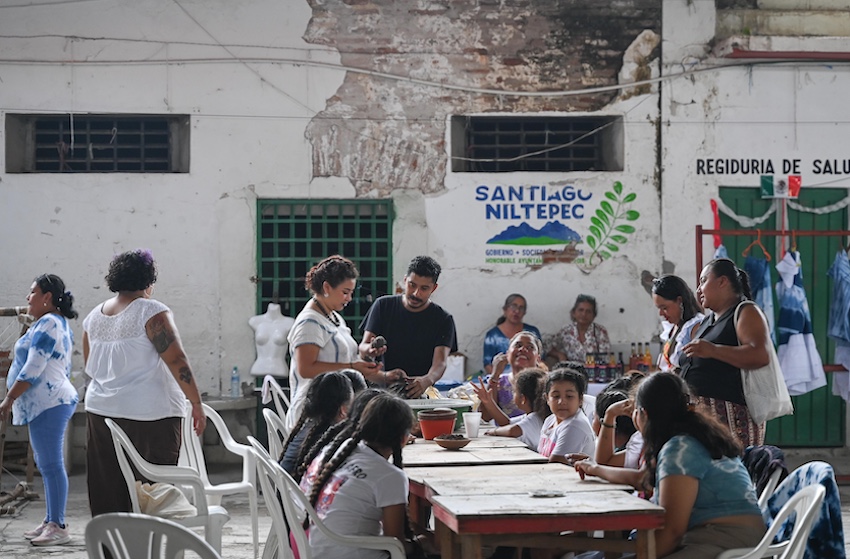
Arriving in Niltepec, after a 7-hour bus ride from Oaxaca City, you are immediately hit with a wave of heat thick with stifling humidity, perfect conditions for the growing of this valuable crop. It takes approximately 200 kilograms of raw plant material to end up with one kilogram of the dye, a dried fermented paste made from the leaves, with a charcoal-like consistency. Due to the intensive process and low yield, the dried indigo is often referred to as ‘blue gold’. Currently, the value is around 3,500 pesos (US $190) per kilo.
The indigo grown in Oaxaca is a strain called Indigofera suffruticosa, native to the Americas. The plant grows in the rainy season, typically between May and September, and must be harvested before it flowers.
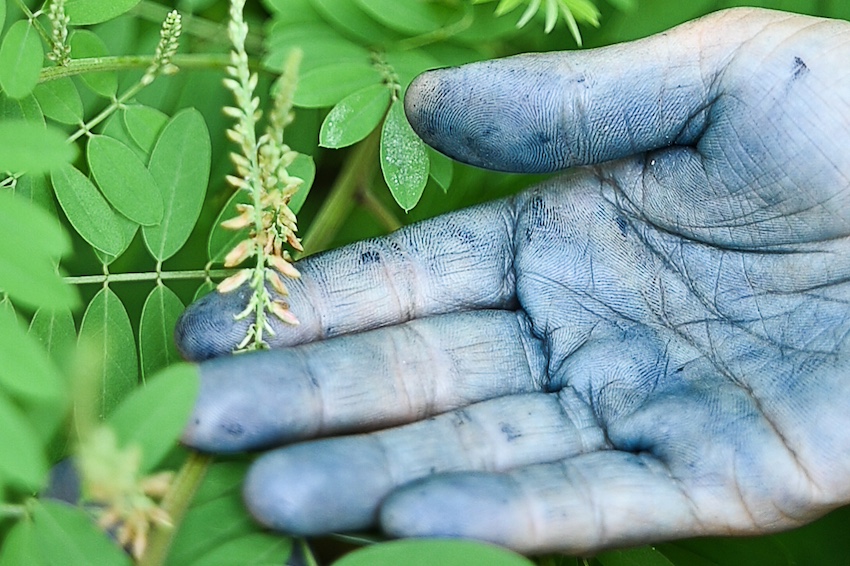
The harvesting of jicalite is done in the cooler hours before dawn. They are bound, cut with a scythe and loaded into ox-drawn carts. These carts can pass through the mud, unpassable by car following the intense rains in the region.
The plants must be processed before they dry out. If they dry out they lose their dying potency, which comes from the fresh indican in the leaves, which is the chemical precursor to the indigo dye.
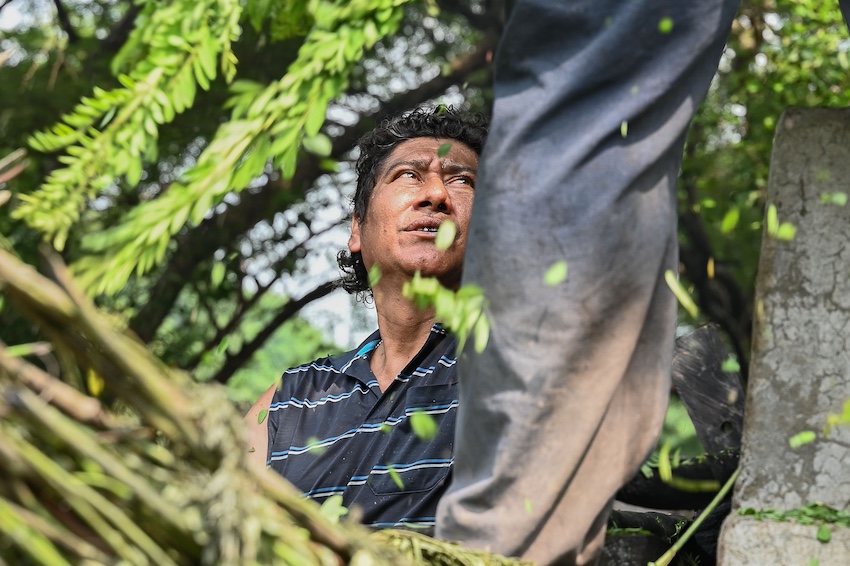
Processing takes place in large man-made pools called ‘pilas’, which are often hundreds of years old. The ‘añileros’ load up the pilas with the fresh cut plants, pressing them into water and held down with a heavy wooden lattice. Over several hours the plant ferments, turning the liquid an acid yellow/green color.
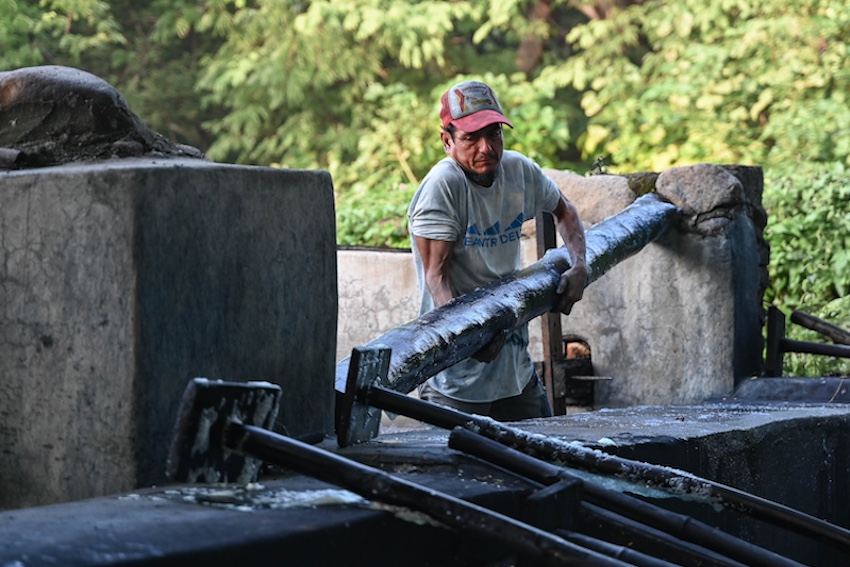
Eventually, they open a valve to release the liquid into a secondary lower pool, which they agitate and aerate with paddles for several hours. After the fermentation they add the berry of the Gulaver plant to thicken the liquid into a mud-like substance. Often the ancient pilas are built along the river, under Gulaver trees.
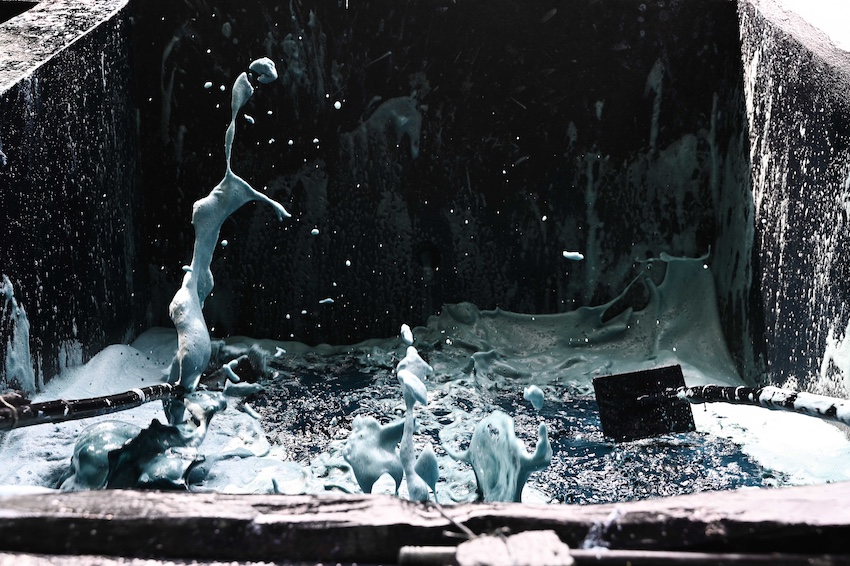
In the afternoon, the indigo water is taken from the pila’s back to the añileros home. There it is strained through cheese cloth to remove the excess liquid, before the remaining paste is dried in the sun, often using old roof tiles.
We visited the home of añilero Manuel Valencia and his wife Lulu. While Manuel managed the harvest and work at the pila, Maestra Lula managed the drying stage of the indigo process.
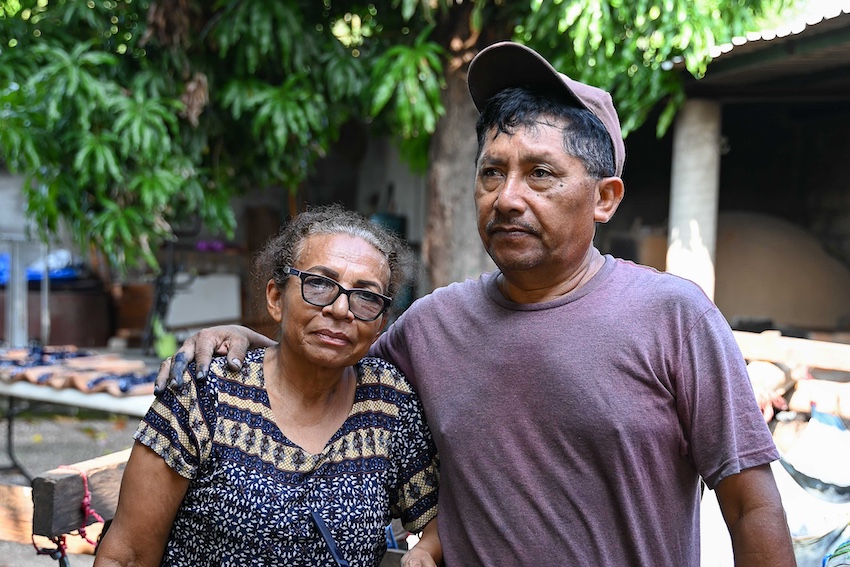
After learning about the process of making the indigo dye, we walked to the town center, which was decorated for the annual fair. There we got to dye some of our own clothes, using a japanese inspired technique called ‘shibori’ to create a tye-dye effect.
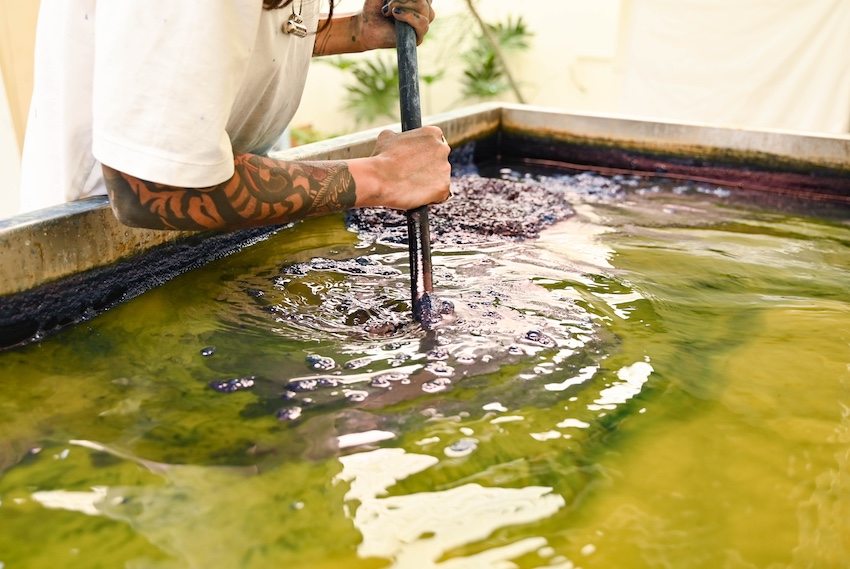
To begin with, the dyeing liquid is still yellow-green. It is warm, but not boiling. The material must be carefully submerged to not agitate the water too much. The fabric only turns blue as it meets the air and the dye oxidises.
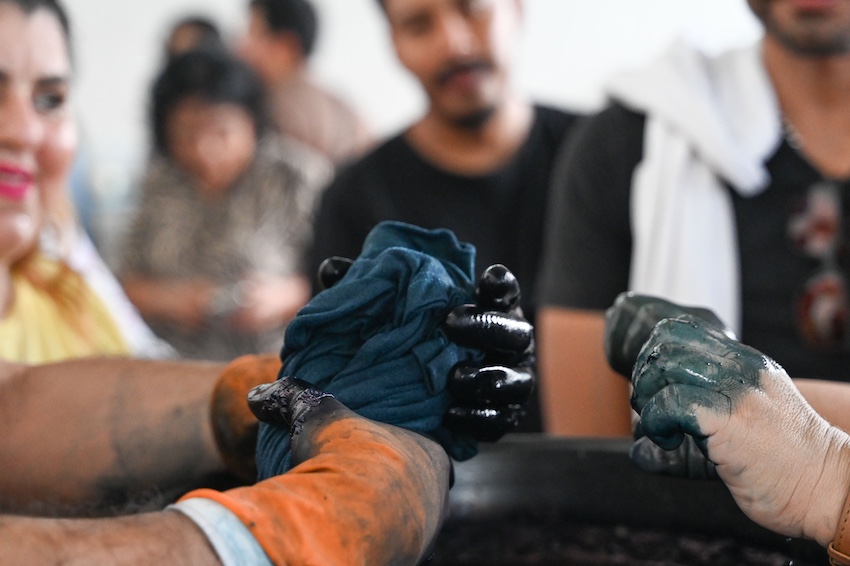
Walking though the center of Santiago Niltepec, you see women dressed in traditional clothing, a huipil and falda (skirt and blouse). But unlike the typical embroidered textiles from neighboring towns, the fabric of these huipils and faldas have been dyed a beautiful blue patterned with the shibori method, illustrating a fusion of historical practices with new traditions.
During the feria we met with Oaxacan artist Carolina Garza, founder of Hilos Flojos (loose threads). She was running a workshop during the festival in Niltepec. Back in Oaxaca City she also manages workshops, teaching the method of dying with indigo. If you are visiting Oaxaca and are interested in taking an Indigo workshop, contact Hilos Flojos.
Anna Bruce is an award-winning British photojournalist based in Oaxaca, Mexico. Just some of the media outlets she has worked with include Vice, The Financial Times, Time Out, Huffington Post, The Times of London, the BBC and Sony TV. Find out more about her work at her website or visit her on social media on Instagram or on Facebook.
